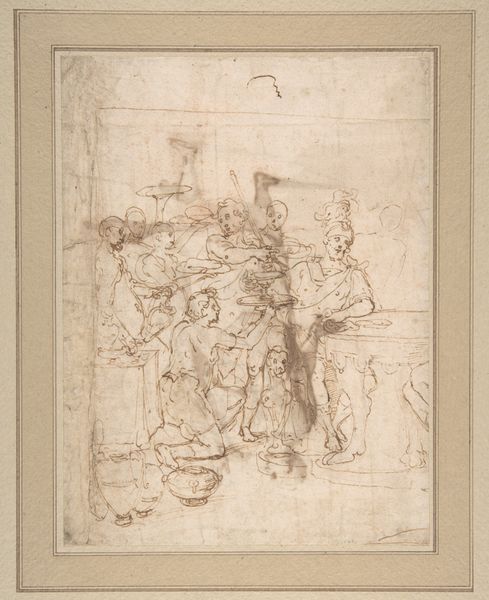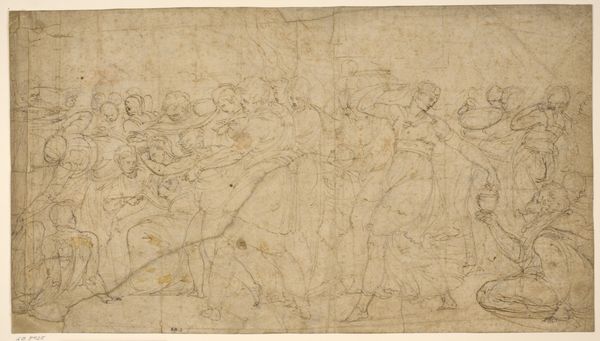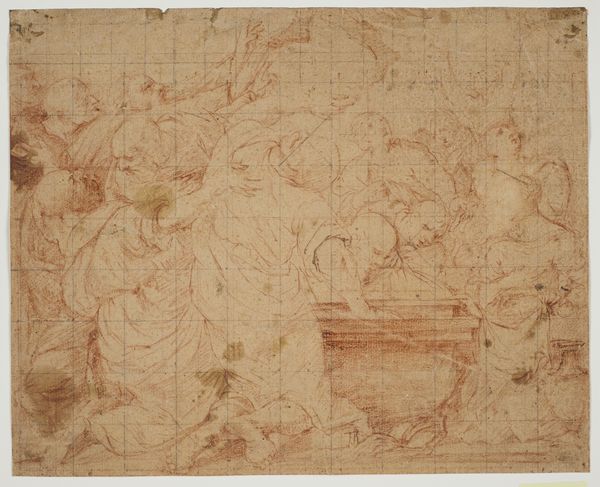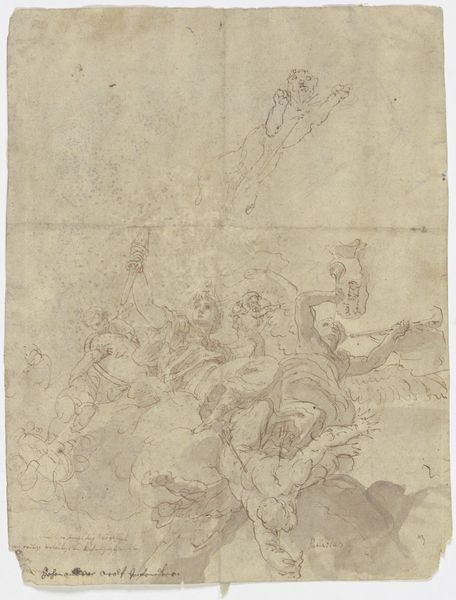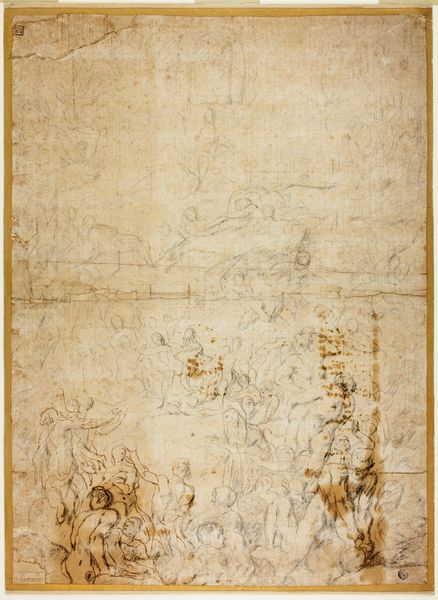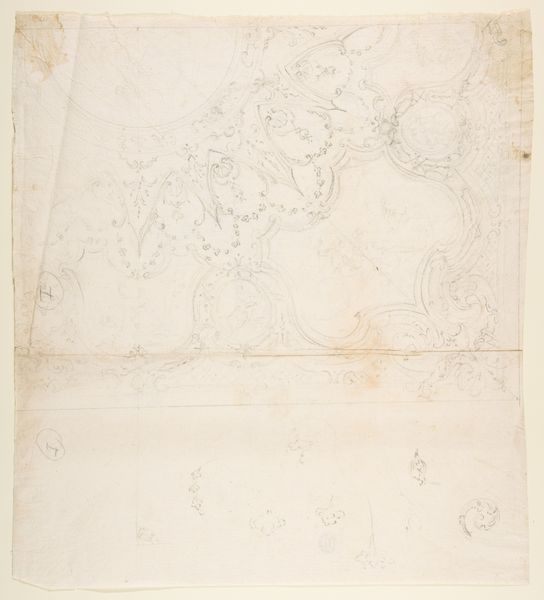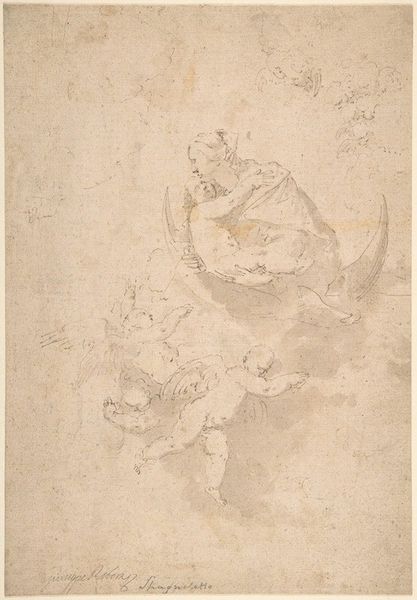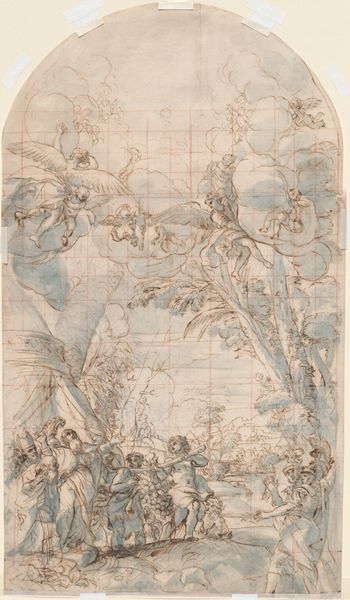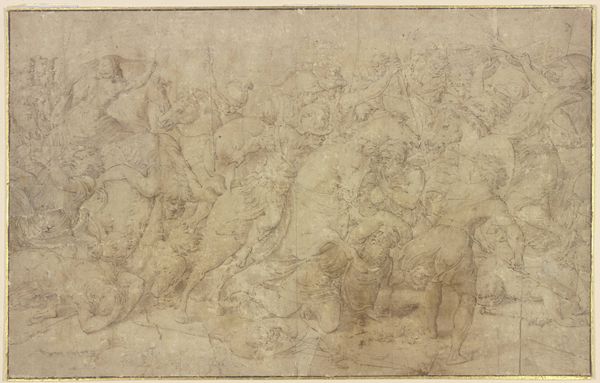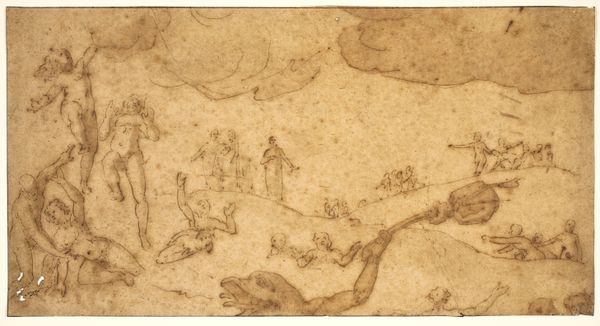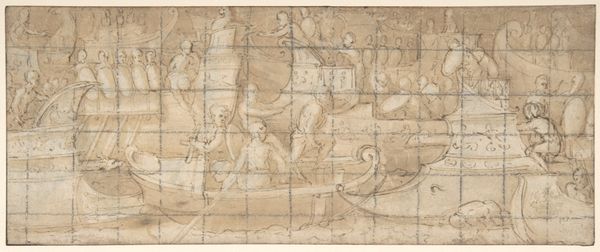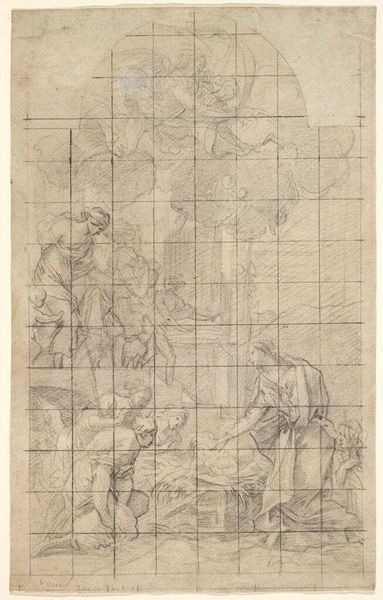
drawing, print, paper, pen
#
portrait
#
drawing
# print
#
figuration
#
paper
#
pen
#
italian-renaissance
Dimensions: sheet: 16 7/16 x 11 7/16 in. (41.7 x 29.1 cm)
Copyright: Public Domain
Editor: So, here we have Ludovico Carracci's "The Last Communion of Saint Jerome," a pen and brown ink drawing on paper, dating from 1555 to 1619, now residing at the Metropolitan Museum of Art. It feels…unfinished, raw, yet powerful. What do you see in this piece, especially considering its historical context? Curator: I see a powerful statement on the institutional role of the church. Look at how Carracci frames Saint Jerome's final moments. The composition, even in this preparatory state, stages the act of communion not merely as a personal sacrament but as a public demonstration of faith, reinforcing the Church’s power through the performance of ritual. Editor: The way you highlight that staged aspect makes me consider how the figures surrounding Saint Jerome play into the Church's agenda, you know? What were some specific socio-political forces at play influencing this depiction of a saint’s last communion? Curator: Think of the Counter-Reformation. The Catholic Church, facing the rise of Protestantism, was keen to reassert its authority through grand artistic expressions. The emotional intensity of scenes like this served to reaffirm the sanctity of the sacraments and the vital role of the priesthood in mediating divine grace. It’s carefully constructed visual propaganda. Editor: So, the "unfinished" quality might also be deliberate, focusing on conveying that powerful message rather than perfecting minute details? Curator: Precisely! The rawness amplifies the urgency, inviting viewers to witness this moment of faith actively. Plus, the presence of the grid implies it's a study, a work to prepare another important image. Consider the implications for viewers who first saw the finished piece. How might this staged authenticity impacted their understanding of faith and the Church's place in their lives? Editor: Wow, framing it as staged authenticity… That’s definitely changed my perception. Thanks, that really illuminates the cultural weight embedded within this seemingly simple drawing. Curator: And for me, considering your perspective helps to see the impact the style of the sketch makes on the narrative and it’s connection with religious practices.
Comments
No comments
Be the first to comment and join the conversation on the ultimate creative platform.
